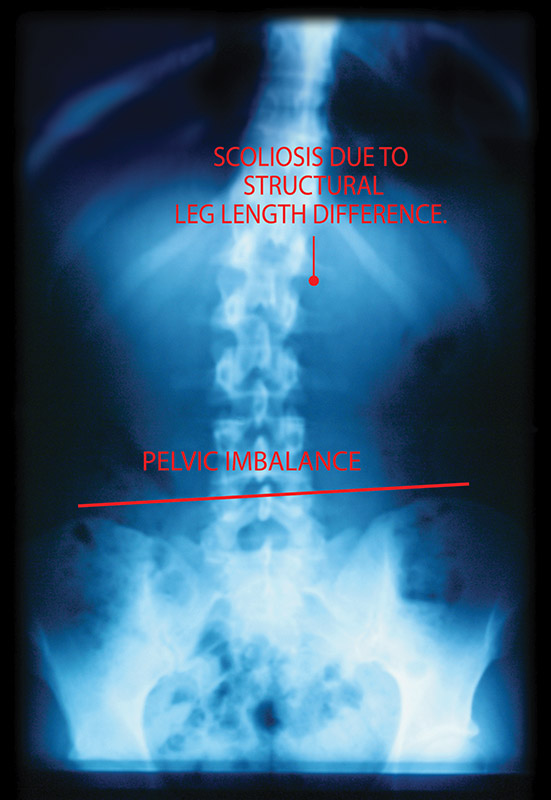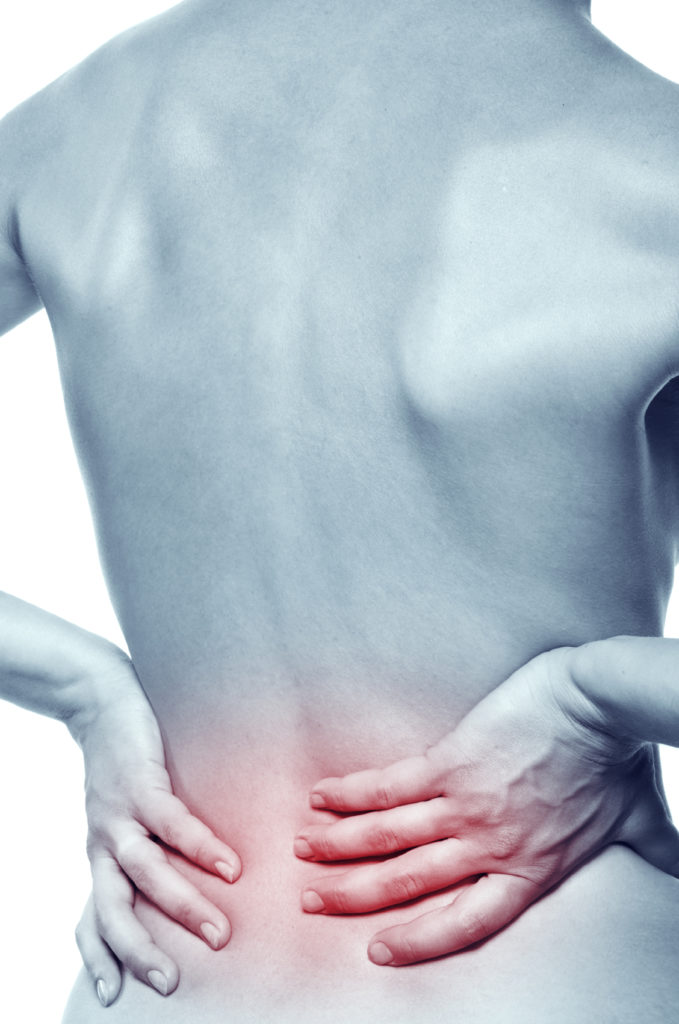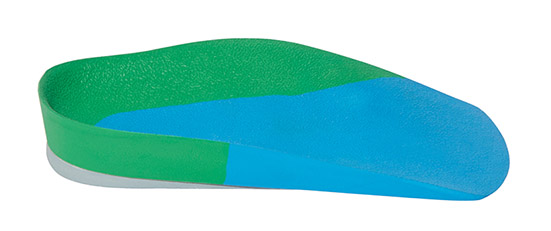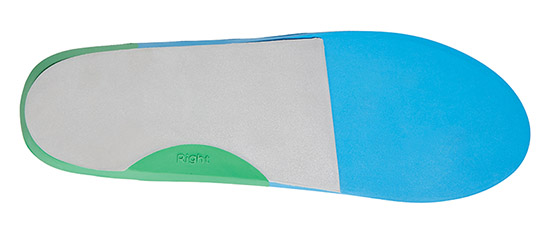Lower Back and hip pain (non trauma related) can be attributed to many underlying causative factors including: unilateral and bilateral pronation and functional and structural leg length discrepancies. It is important to accurately identify if there is a functional or structural leg length difference in patients suffering low back and/or hip pain, as the treatment regimes are different.
Biomechanical Aetiology
Low back pain is associated with excessive pronation occurs due to the pelvic cage rotating anteriorly causing a lordosis at L1 to L5 (‘sway back’) with excessive stress in that area.
A structural leg length discrepancy is as the name suggests, a difference in the measurement of the tibia and femur, and can be hereditary or trauma-related. A structural leg length difference can result in the longer leg jamming up into the hip and Sacro-Illiac joint.
A functional leg length discrepancy can arise from a variety of causes including soft tissue compensations and trauma, which can affect the biomechanics of the body. Soft tissue compensation can occur to muscular imbalance (arising from, for example, poor training techniques) or maybe due to habit (for example, lying on one side in bed).
Both structural and functional leg length differences are important to identify, especially when low back or hip pain are present. Both types, if left untreated, can cause a predisposition to hip joint wear and tear on the longer leg side, and the need for a hip replacement later in life.

Symptoms
Symptoms can be similar for functional and structural leg length discrepancies, including:
- Low back aches and pain
- Hip pain (anterior or posterior pelvic twist)
- Headaches (including migraines)
- Jaw misalignment
- Neck and shoulder pain
- Scoliosis (including idiopathic)
- Osteoarthritis in joints, primarily on one side of the body.
- Increased pronation on one side (usually the ‘long leg’ side).
- Excessive unilateral pronation (i.e. increased pronation on one side – usually the ‘long leg’ side).

Treatment
A multidisciplinary approach, combining orthotic therapy, adjustments and mobilisations to restore the pelvis to its’ correct position, will deliver the best results for patients exhibiting a leg length discrepancy. Orthotics should be prescribed bilaterally (i.e. for both feet) for both a structural and functional leg length difference. This will assist in balancing the body and restoring and maintaining correct biomechanical function. The ICB Orthotics should be moulded and fitted to the Subtalar Joint Neutral Position to control the excessive pronation of the foot on the longer leg side.
In the case of a structural leg length difference (non trauma or trauma related), a heel lift will also need to be added to the orthotic on the corresponding ‘short leg’ side. As there is a physical difference in the bone lengths, a heel lift should be added to compensate for the shorter bone/s, which will also assist in balancing the lower limbs, and relieving associated pain. It is not recommended that a heel lift be used exclusively, as doing so will not treat long leg compensatory excessive pronation, thus not giving the optimum pain relief results.
Additional Treatment
- Adjustment and mobilisations should be performed (especially in the case of a functional leg length difference) to untwist and/or re-balance a tilted pelvis.
Head Office
Kirrawee NSW 2232
AUSTRALIA



